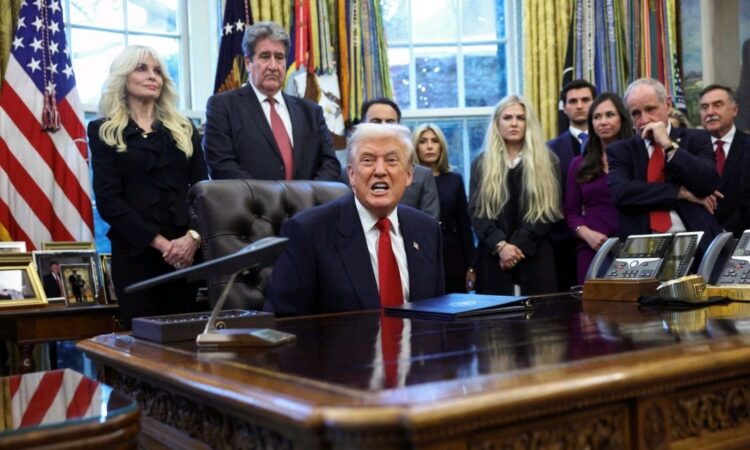
Donald Trump has launched a new wave of tariffs in 2025, and most economists agree these kinds of taxes do more harm than good. They rarely help the country that imposes them, and they often end up hurting regular people the most. In this case, the people paying the price are Americans themselves.
Tariffs work like an extra tax on imported goods. Businesses have to pay this tax when they buy products from overseas, and in 2025 they passed more than half of that extra cost on to customers. That means everyday Americans are paying higher prices on many things they need. According to estimates, the average U.S. household is paying about $1,300 more this year and could pay around $1,600 next year because of these price increases. This hits everyone the same way, whether they are barely getting by or extremely wealthy. But a $1,300 increase in living costs is far more damaging to a family living paycheck to paycheck than to someone making millions. For poor and working-class households, it can mean tough choices each month—what bill to pay, what food to skip, or what essentials to stretch.
Because of these tariffs, a fast-food worker earning $15,000 a year ends up facing the same price jump on basic goods as a CEO earning tens of millions. Trump often brags about how much money the tariffs bring in for the federal government, but he does not mention that the money is coming directly from Americans—not from the foreign countries he claims to be punishing. In effect, he has raised taxes on Americans without Congress approving anything. It is taxation without representation, just under a different name.
Many small businesses have taken the government to court, arguing the tariffs are illegal and beyond what a president is allowed to do. These businesses say they lost money because of the tariffs and want to be paid back. The administration argues that undoing the tariffs would cost the government billions, but avoids admitting that those billions came out of the pockets of U.S. companies and consumers in the first place. Everyday Americans who are also suffering could make similar legal challenges, though such a lawsuit would almost certainly fail, especially with a Supreme Court shaped by Trump. Even if unsuccessful, however, the political statement would be enormous.
None of this should really be surprising. During Trump’s first term, tariffs raised prices on goods and cost American consumers over $7 billion by the end of 2018. Instead of helping American industry, these tariffs actually harmed manufacturing jobs and overall employment, according to the Federal Reserve. Trump promised tariffs would shrink the trade deficit, but the deficit grew even larger—from $481 billion in 2016 to $679 billion in 2020. The truth is that the U.S. imports so much because Americans buy more than the country produces, not because other nations are tricking or “ripping off” the United States.
Tariffs also hurt many American industries—especially farming. U.S. agriculture lost tens of billions of dollars in exports because other countries struck back with tariffs of their own or found new trading partners. Many industries depend on foreign-made parts, so tariffs raise their costs and make it harder for them to compete.
Now, in Trump’s second round of tariffs, the impact is even broader. These new tariffs cover more countries and more products, which means prices are rising on items nearly everyone uses. Americans are paying more for groceries, meats, seafood, clothing, shoes, furniture, restaurant meals, electronics like phones and TVs, foreign-made cars, plane tickets, and even basics like toothpaste and toilet paper. When almost everything becomes more expensive, the poor suffer the most. About 37 million Americans live below the poverty line, and they spend most of their income just on basic necessities. These are people who cannot simply absorb higher costs, yet they are being hit the hardest.
Many of the programs that help low-income families—like Medicaid, SSI, TANF, SNAP, and others—were created under Democratic administrations. Trump’s budget proposals have often included cuts to programs that help the poor, showing that easing their burden is not a priority for him. Meanwhile, the tariffs add yet another obstacle for people already struggling to survive. They push more families deeper into long-term poverty, making it even harder to climb out of economic hardship.
So why does Trump continue with tariffs when the financial pain for Americans is obvious? To him, tariffs are a way of striking back at other countries he believes have treated the U.S. unfairly. The suffering of American families becomes secondary to his desire to appear strong or to seek revenge on the global stage. In his pursuit of this personal mission, he treats the economic wellbeing of millions of Americans as collateral damage.
This situation paints a clear picture: Trump’s tariff strategy is less about helping the American people and more about feeding his own sense of grievance and retaliation, even if it leaves the country paying the price.




